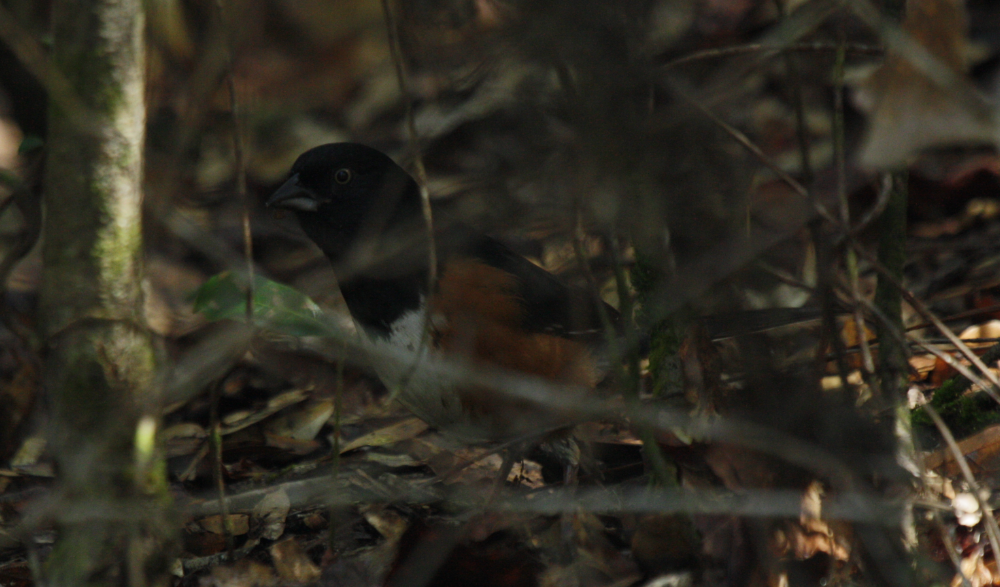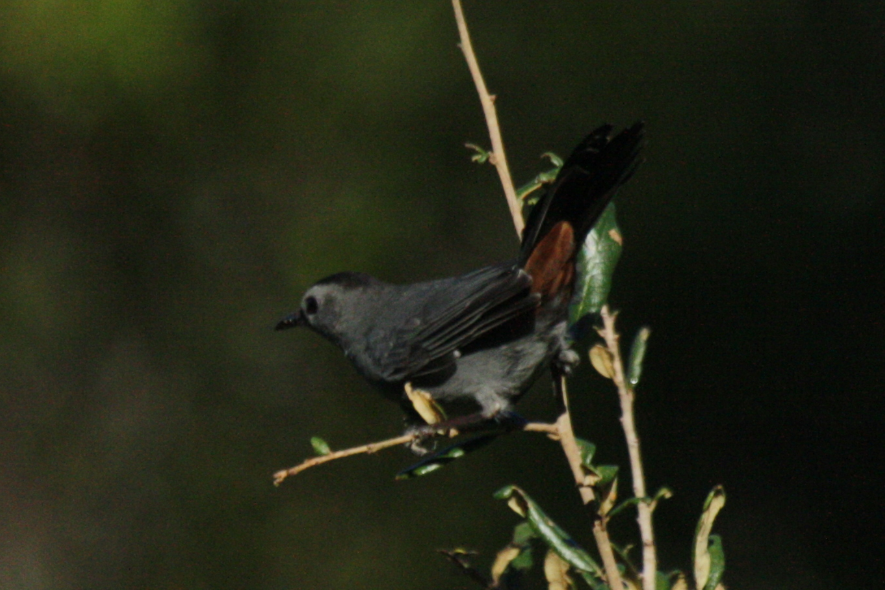Before I take this blog post to its intended destination I will start off by adding a section about Chinsegut Wildlife Center. We found out about this center literally by opening up a map and pointing at it. There was the fear that it was one of those children's education places rather than a real park with content to admire, but it was a good decision. It turned out to be one of the best but overlooked birding areas in the county.
One of the common inhabitants is the
red-headed woodpecker, a bird which is quite rare elsewhere in this part of Florida. Other than their appearance at feeders, they are usually invisible and shy, so this at-feeder photograph is the best I have at the moment:

This wooded location also boasts all other Florida woodpeckers except red-cockaded, including the sizeable pileated woodpecker. Pileated is an elusive and skittish species whose laughing call carries far and wide, penetrating an often silent wilderness. Often a single bird is echoed by other in the immediate vicinity, but they are generally uncommon and spread out over large portions of woodland. Naturally it is generally heard far more often than it is seen, the best chances of seeing these birds is hearing one and having the luck to be beside it. Since the presumed loss of the ivory-billed woodpecker, the pileated has now become the largest living species of woodpecker on the continent. And big they are! Far larger than any other American woodpecker, they are quite striking birds if you get a good look at them.
 |
| The giant woodpecker comes to light: exceptional views of this secretive shade-loving woodpecker. |
In other notes, a bird I've yet to get good photos of is the "yellow" palm warbler. Palm warblers are probably the most abundant bird in Florida during winter, but most of them are the brown "western" subspecies and they turn up everywhere. The yellow palm warbler or "eastern" palm warbler is less common. Whenever I include a yellow palm warbler in my bird sightings ebird gives me the flashing green "RARE Are you sure?" notification. They certainly aren't that rare though, I tend to see at least one in any well-sized palm warbler flock. In some cases nearly half a flock can be yellows. Unfortunately they are very quick to leave the scene and certainly don't stay around long. Too bad.
 |
| A passable photo of a "yellow" palm warbler at Chinsegut. Some birds are nearly this yellow, but they are most likely hybrids between the two subspecies. Perhaps next time I'll manage to change my camera settings before it takes off. |
Another winter visitor to Florida is the
grey catbird. This skulky bird is named for its raucous call that does not exactly pass as a cat, but I guess I can see where they were coming from. I mention this bird as on this particular visit I had my first actual views of this species when I flushed one while walking past a bush. I was half expecting my first views to be part of a tail or such but in the apparent consternation of being spotted this one seemed to forget that it was meant to be a secretive and invisible bird:
I'd also like to offer a mention to the
white-eyed vireo. This species is rarely common anywhere, but in Florida we are lucky enough to have this bird resident all year round. I had my first encounter with the species while getting to grips with its songs and calls on my iPhone during a quiet section of the forest. During one of these playbacks I heard wings in a bush beside me. I raised an eye to this new shadow and there it was! I purposefully had the sound on low to avoid disturbance, but it seems I underestimated avian hearing. The bird had come from well across the forest to seek the mystery intruder.
 |
| The pale eye is unique to this particular vireo, at least in America. |
 |
| "Now where did that sound come from?" |
 |
| "Must be here somewhere." |
Keeping up with the skulky and pale-eyed theme is the eastern towhee. A cousin to the abundant spotted towhee in California, the unspotted eastern towhee shares the same leaf-kicking behaviour. They don't seem to be as diverse in vocals as spotted towhee, instead they tend to monotonously use the same calls over and over, but an otherwise "nostalgic" bird.
Eastern towhees lurk in shady areas and hedgerows, kicking up leaf litter as they go. They are not usually that flighty, but generally not tame either.
 |
| Eastern towhee sneaking around. |
 |
| This species was once called the rufous-sided towhee when it was merged with the spotted towhee. |
Finishing up the skulking theme is the thrush-like warbler named for a nest that it builds on the forest floor. This odd warbler hardly looks like a warbler and is certainly quite different to other members of the family. Unlike the towhee this bird bolts at the slightest sound and often hides in deep cover which makes it rather frustrating to get a good look at. This all assumes you even see the bird dart away to begin with, you are far more likely to walk past it. I now present: the ovenbird.
The final highlight of the day was this stunning yellow-throated warbler that hopped around the windows of the visitor center.














No comments:
Post a Comment